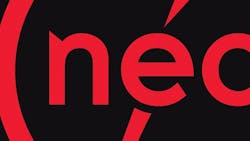Equipment Grounding, Part 1
Part VII of NEC Art. 250 provides the requirements for equipment grounding. Because the Code often uses the word “grounding” to mean either grounding (a connection to the earth, see Art. 100 definition) or bonding (a metallic connection, see Art. 100 definition) it’s easy to become confused.
To avoid that confusion, always think of where you are. If you’re on the load side, you bond and you never ground. If you’re on the supply side you will bond in some cases (e.g. metal enclosures are bonded) and ground in others (e.g., a separately derived source must be grounded). But in all cases, you bond the actual equipment and you don’t ground it. So in Part VII, it’s all about bonding.
The equipment grounding conductor (EGC) does ultimately connect to ground. But it’s not making a ground (earth) connection at the equipment. It’s making a metallic connection. The EGC itself is connected to ground at the source, but not at/near the equipment. You can’t use the earth as an EGC; what you can use (e.g., raceway) is listed in Sec. 250.118.
